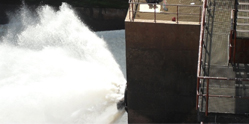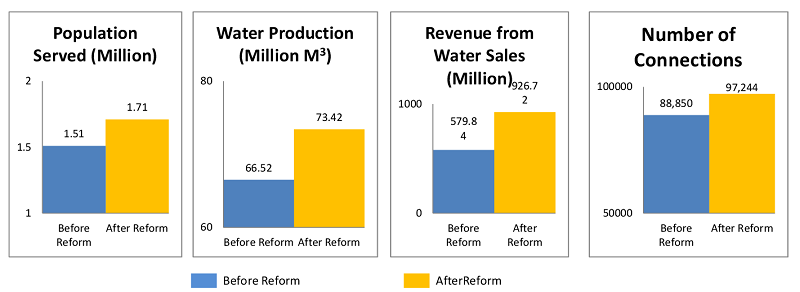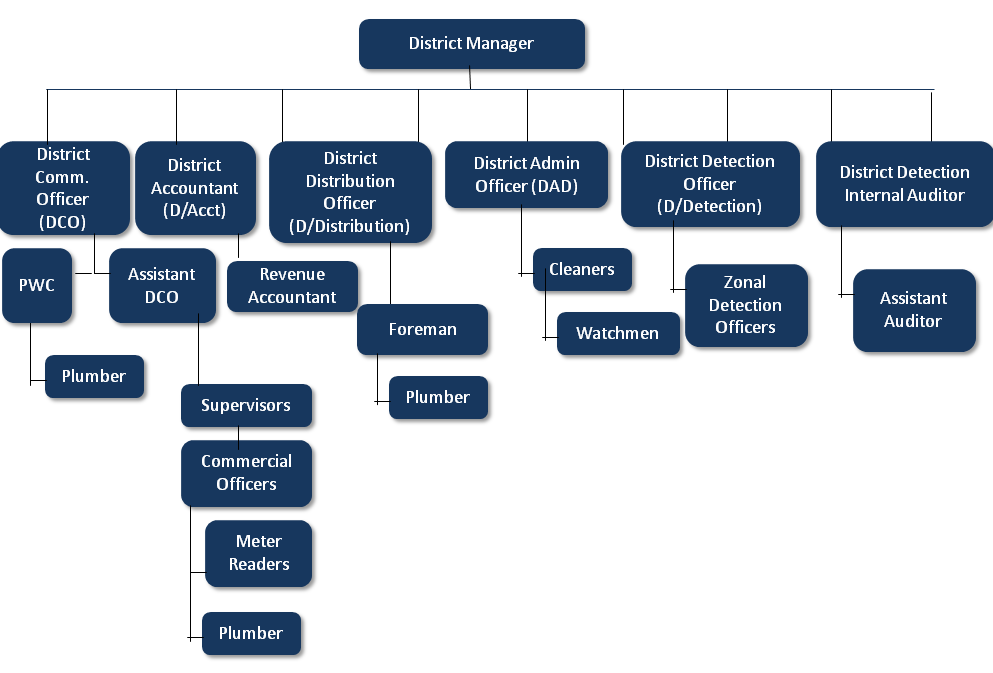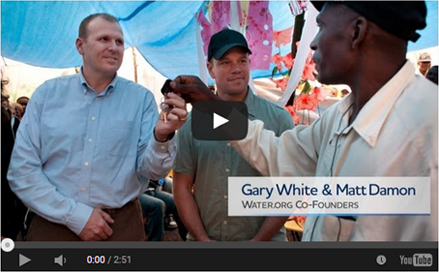
The Kaduna State Water Board (KSWB) was first created through an edict in 1971 (Edict No.2 of 1971). On the 1st of July, 2004, the Kaduna State House of Assembly passed the Kaduna State Water Board Law No.6, establishing the Kaduna State Water Board. The KSWB is made up of Nine (9) key departments, namely; Administration, Finance, Operations, Commercial, Projects, Corporate Planning, Audit, Quality Control, and Special Duties as shown on the organizational structure below:

The Board Operation is decentralized into 16 districts, serviced by Twelve (12) water treatment plants across the State. In line with the Kaduna State Water Supply and Sanitation Policy, the main functions of the KSWB are;
Prior to the reform programme in Kaduna State, the state of the water supply infrastructure affected the production and distribution capacity of the utility, which brought about reform activities and the outcomes has been remarkable in the Utility in the areas of;
Rehabilitation: A total of seven (7) water treatment facilities have been rehabilitated under the reform programme. The treatment facilities rehabilitated are;
The rehabilitated plants have contributed to the increase in the availability of water in the State, since production equipment and machineries were repaired or replaced to increase production capacity. Further information on the treatment plants listed above are included in Appendix B.
New Works: Though most of the physical works in the reform programme have been on the rehabilitation of existing facilities, the Kaduna State government has been providing complimentary infrastructure projects for the Reform Programme (e.g. the construction of 10 new service reservoirs). In Zaria, the State government has expanded the water works to increase production capacity of the utility. The expansion works in Zaria is ongoing, with the support of the Federal government.
The Federal government has also completed the construction of a multipurpose dam (186million cubic meters) in Zaria, for water supply, irrigation and power generation.
Network Expansion: The State government has also supported the expansion and rehabilitation of the water distribution pipe network of the State utility. 73KM of various sizes of transmission and the distribution pipes was expanded to a total of 494Km of pipelines in Zaria and its environs. The distribution network rehabilitation in Kaduna town was quite extensive, due to the existing old asbestos cement (AC) pipes. The utility network system had close to 500km of AC pipes to be replaced. With the support of the reform programme, 142Km of pipes have been rehabilitated.
“A number of areas that were not getting supply at all around Narayi, Bayan Dutse, and some areas in southern part of Kaduna now have pipelines passing through their communities. Kabalia Doki had no access to piped water for about 12years. Today, the reform project has changed the situation for good” MD, KSWB, 2015.
Increase in production capacity naturally has led to an increase in water supply operations in the utility. The customer connections have increased from 66,000 to 98,000 within the period of the reform. The billing processes also had been improved upon. Over 200 motor bikes and 50 operational vehicles were acquired during reform to meet the needs of increasing number of complaints ranging from burst pipes and leaks, to customer complaints on lack of water supply. The State government in a bid to contribute her quota constructed Galma dam, and the power supply component which is ongoing, however, Communities around the dam area are now enjoying fish farming and dry season farming while the Water Board will be getting improved water supply to their water treatment units.
| Indicators | Unit | Baseline (2004) | Current figure | % change |
| Water production in million M3 | Million m3 | 66.52 | 73.42 | 10.37 |
| Total length of Distribution network rehab./Constructed | Km | 2,451 | 2,632 | 7.39 |
| No of connections | No | 88,850 | 97,244 | 9.45 |
| Population served from the systems under rehabilitation. | No X 106 | 1.51 | 1.72 | 13.91 |
| Efficiency | % Billing | 64.95 | 66.14 | 1.19 |
| Efficiency | % Collection | 64.65 | 67 | 2.35 |
| Total cost of production in =N=million | =N=million | 800.89 | 2,330.56 | 191.00 |
| Revenue from Water sales in =N=million. | =N=million | 579.84 | 926.72 | 59.82 |
| Cash operating ratio | Ratio | 0.96 | 0.40 | -58.33 |
 Key Indicators for KSWB - Recorded Increase
Key Indicators for KSWB - Recorded Increase
The KSWB structured as a centralized management system before the reform programme in the State which ensured that all decisions on the operations and management of the utility were made by the Chief Executive change with the coming of reform into the Delegated Management Programme (DMP) structure, which is a decentralized composition of different units of one utility, this was conceptualized and implemented through the National Urban Water Sector Reform Programme. The introduction of the DMP has institutionalized the culture of responsibility across the cadre and management of the KSWB.
The DMP is based on the different districts in Kaduna, where each district is made autonomous in the management of financial, administrative, and operational issues with decisions taken at the district levels, without reference to the headquarters. The DMP structure has eliminated the clog in the management processes of the KSWB, thereby moving the utility from a government styled bureaucratic system to a commercially focused business system. The organization chart for the districts is present in below.

With the DMP structure, staffs of the KSWB are responsible for the performance of their district, making human capacity development a priority for the utility. The NUWSRP has supported the KSWB in capacity building programmes for their staff, helping to develop human capacity across all human resources levels of the utility trained nationally, internationally, and within the utility (on-the-job and in-house training), and these training programmes has improved the capacity of the KSWB staff in effective water utility management.
The NUWSRP in Kaduna State has developed a number of planning and framework documents for the effective management of the utility and also supported the development of key sector governance documents in the State. Some of which includes:
Kaduna State Water Supply and Sanitation Policy 2013
The objective of the policy is to ensure the provision of sufficient portable Water and adequate Sanitation to the citizens of Kaduna State in an affordable and sustainable way through participatory investment by
the State Government, Federal Government, Local Government, Private sector and the community. The policy clearly shows the need for the state Ministry of Water Resources to be fully involved in policy formulation, sector co-ordination and research, while the Water supply and Sanitation Agencies shall deliver services accordingly.
A law to provide for the development and regulation of the Kaduna State Water Sector, the establishment of the Kaduna State Water Corporation, Kaduna State Small Towns Water Supply and Sanitation Agency, Kaduna State Water Services Regulatory Commission, and defining the roles of the Government, Private Sector, and the Civil Society.
The utility also maintains public communication products and materials, similar to what all the utilities involved in the NUWSRP, are doing. The communication materials include video clips, pictures, pamphlets, and introductory slideshows.
The NUWSRP in Kaduna has recorded immense successes and the utility, today, ranks among the best performing in the country considering its level of financial independence and capacity to meet operation and maintenance costs.
Some challenges have been identified by the utility, as obstacles to the pace of reform and progress in the KSWB. Notable among these challenges are as follows;
The NUWSRP in Kaduna has supported the State utility in the improvement of water supply services to the people of the State. Though some reasonable time was lost due to the redesigning process for physical works, the rehabilitation of key water supply assets and the reorganization of operational systems and processes have resulted in the improved revenue base of the utility (from 35million to 75million monthly). The Delegated Management Programme instituted with the support of the NUWSRP, has engendered a model for water utility decentralization in Nigeria. Customer care has been made a core focus of the utility, with the introduction of a functional and efficient customer care unit to address customer complaints. The Point of Sales (POS) and payment through banks have also been introduced to ease customer payment of water bills. The decentralization of billing and collection has brought the utility closer to customers, which is a strong factor in the observed increase in revenue generation.

